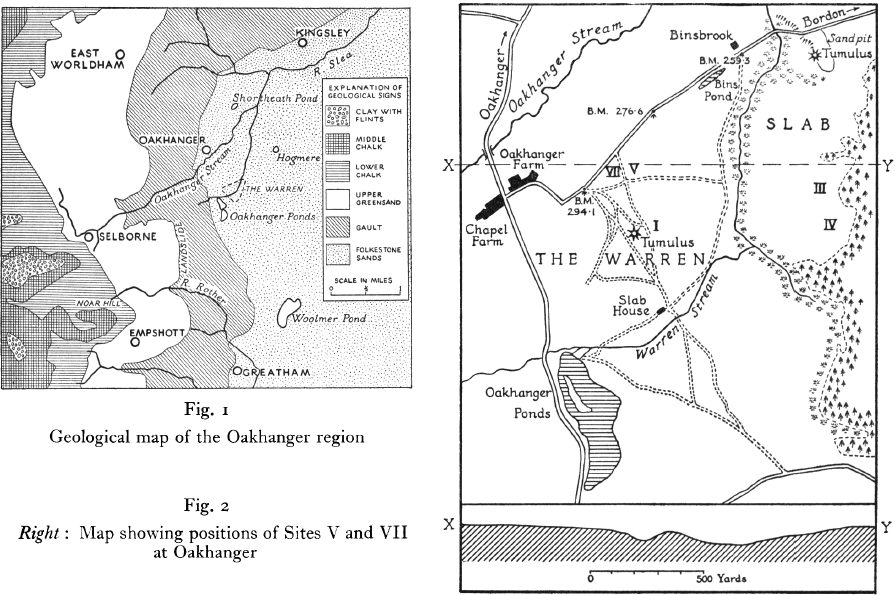Published online by Cambridge University Press: 27 May 2014
The author has already published a full account of the investigation of a mesolithic chipping-floor (Warren V) on the Lower Greensand of East Hampshire in the parish of Oakhanger, near Selborne (fig. 1). The present report is concerned with another (Warren VII), discovered early in 1957 only a few yards to the north-west (fig. 2) and excavated later that year and in 1958.

The interest of the new site is partly that it supplements and enlarges certain details of the material equipment recovered from Site V, but mainly in the evidence it has provided on chronology through the application of pollen-analysis and radio-carbon analysis.
To begin with excavation was carried out in transects 3 feet by 1 foot, but when it became apparent that artifacts were occurring at three levels (fig. 3) the size of the transect was increased to 3 feet by 3 feet. The earliest level (Phase I) occurred at a depth of c. 24 inches; Phase II, which corresponded with the lined surface noted by Dr Dimbleby in his pollen enquiry (see p. 256) at c. 8 to 10 inches; and Phase III in the top 3 inches of humus.
page 246 note 1 PPS, XVIII (1952), 21–35Google Scholar.
page 252 note 1 Godwin, H. and Godwin, M. E., New Phytologist XXXIX (1940)Google Scholar, no. 3; Rankine, W. F., PPS, XV (1949), 70–1Google Scholar.
page 252 note 2 Rankine, W. F., The Mesolithic of Southern England, 61Google Scholar. Research Paper No. 4, Surrey Arch. Soc., 1956.
page 255 note 1 Thompson, M. W. and Ashbee, P., ‘Excavation of a Barrow near the Hardy Monument, Black Down, Portesham, Dorset. (With a Report on Pollen Analysis by G. W. Dimbleby)’, PPS, XXIII, 134–36Google Scholar; Ashbee, P. and Dimbleby, G. W., ‘The Excavation of a Round Barrow on Chick's Hill, East Stoke Parish, Dorset’, Proc. Dorset Nat. Hist. Arch. Soc., 80, 146–59Google Scholar.
page 257 note 1 Loc. cit., p. 132.